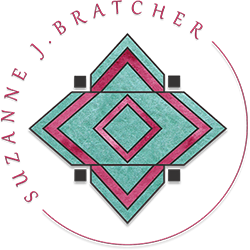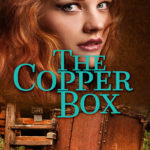
So who is this Kokopelli in my folklore fantasy? If you’re from the Southwest, you’ve no doubt seen variations of the flute player image above in flashing neon over casinos, on hotel letterhead, as decoration on T-shirts, as earrings, necklaces, and key chains.
When I was researching my book, I found a surprising number of books about Kokopelli. They ranged from scholarly works to a rock art guide for hikers. As I sifted through fascinating theories about Kokopelli’s identity, three themes appeared.
A Trader
Archaeologists agree the humpbacked figures with flutes probably represented traders. Macaw feathers from South America and shells from the Pacific Ocean found in central New Mexico prove that trade was common. The hump probably represented a pack filled with goods for trade.The flute the trader played let villagers know he came with peaceful intentions. This image is the one splashed across the modern-day Southwest.
A Fertility Symbol
Other Kokopelli petroglyphs show a reclining figure holding a “flute” that’s clearly a phallic symbol. Archeologists agree this second version symbolized of abundant life, both plant and human. In Hopiland Kokopo’lo’ is a humpback katsina (benevolent spirit being) who participates in a series of night dances. His female counterpart, Kokopo’lmana appears in the Racer Ceremony. Neither of them carry a flute.
A Talking Cicada
Yet another version of Kokopelli appears in various Hopi folktales as a talking cicada. Many scholars believe the cicada was the original insect model for early Kokopelli petroglyphs.
In Kokopelli’s Song
As I wrote my story, Kokopelli stepped on stage in a new role: as an elusive figure who guides Amy on her hero’s journey. When she leaves home, her grandfather promises her whenever she loses her way, she’ll hear Kokopelli’s song. The haunting tune, played on a red cedar flute, is the song of creation, the song that guides people along the path the Creator has planned if they listen for it.
Further Reading
If you’re interested in studying Kokopelli, I recommend three books that taught me most of what I know: Kokopelli: the Making of an Icon by Ekkehart Malotki ; Hopi Kachina Tradition: Following the Sun and the Moon by Alph H. Sekakuku in Cooperation with the Heard Museum; and Kokopelli: Flute Player Images in Rock Art by Dennis Slifer and James Duffield.

 A passionate reader, I began writing as a young girl. After graduating from college, I became a teacher. Over the course of my career, I taught high schoolers, college undergraduates, and public school teachers how to write personal narratives, expository and persuasive essays, as well as poetry and short fiction. I continued to write: publishing professional articles, two textbooks, short stories, and poetry. In 2013, I won first place in Romantic Suspense in the ACFW Genesis Contest.
A passionate reader, I began writing as a young girl. After graduating from college, I became a teacher. Over the course of my career, I taught high schoolers, college undergraduates, and public school teachers how to write personal narratives, expository and persuasive essays, as well as poetry and short fiction. I continued to write: publishing professional articles, two textbooks, short stories, and poetry. In 2013, I won first place in Romantic Suspense in the ACFW Genesis Contest.
Leave a Reply